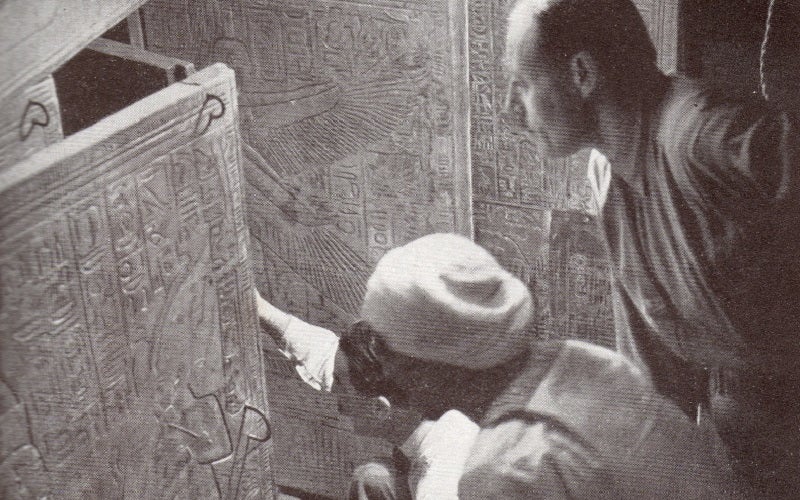
The investigation of King Tut’s tomb to find secret chambers
A team from Cairo University’s Faculty of Engineering and the Paris-based organization Heritage, Innovation and Preservation used infrared thermography to detect the temperature of the walls in the tomb. Preliminary analysis indicates the presence of an area different in its temperature than the other parts of the northern wall—a potential indication of a hidden chamber.
“The experiment lasted for 24 hours,” Egypt’s Antiquities minister Mamdouh Eldamaty said in a statement.
Photos: Inside King Tut’s Tomb
In order to certify the results, Eldamaty said, a number of experiments will be carried out to determine more accurately the area showing the difference in temperature.
“The team was very impressed and full of emotion to spend the night in the tomb,” Mehdi Tayoubi, founder of the Paris-based Heritage Innovation Preservation Institute, told Discovery News.
The non-invasive search follows a claim by Nicholas Reeves, a British Egyptologist at the University of Arizona, that high-resolution images of the tomb’s walls show “distinct linear traces” pointing to the presence of two still unexplored chambers behind the western and northern walls of the tomb.
Related: Tut’s Funeral: Burying the Boy King
According to Reeves, one chamber contains the remains, and possibly the intact grave goods, of queen Nefertiti, the wife of the “heretic” monotheistic pharaoh Akhenaten, Tutankhamun’s father.
He argued that a painting located behind King Tut’s sarcophagus has been wrongly interpreted. Egyptologists have always believed the scene shows Ay (who largely directed King Tut’s reign and succeeded him) performing the Opening of the Mouth ritual on the boy king.
Reeves believes the figure labelled Tutankhamun is actually Nefertiti. He noted that a line at the side of the figure’s mouth, called “oromental groove,” is a trademark in pictures of Nefertiti. On the other hand, the figure labelled Ay would be Tutankhamun, completing the death ritual for Nefertiti.
Related: Weird Facts About King Tut and His Mummy
Reeves speculated that the tomb of King Tut was not ready when he died unexpectedly at 19 in 1323 B.C. after having ruled a short reign of nine to 10 years. Consequently, he was buried in a rush in what was originally Nefertiti’s tomb, who had died 10 years earlier.
Reeves’s claim about Nefertiti has stirred a debate among Egyptologists and mummy experts.
An international team of researchers led by mummy expert Frank Rühli, director of the Institute of Evolutionary Medicine at the University of Zurich, cautioned last month about the possibility of Nefertiti being the occupant of the secret crypt.
They argued Nefertiti might be the already found Younger Lady, a mummy found in 1898 by archaeologist Victor Loret in tomb KV35 in the Valley of the Kings.
Related: Who Else May Be in King Tut’s Tomb?
Nefertiti is labelled in inscriptions to be Tutankhamun’s mother; genetic analyses identified the “Younger Lady” as the mother of Tutankhamun.
Such evidence would automatically rule out Nefertiti, the researchers concluded.
If a mummy is found, it could belong to the elusive pharaoh Smenkhkare, or to queen Meritaton, the full or half sister of Tutankhamun, they added.
It is also possible that nothing at all will be found behind those walls, they said.
Investigations in King Tut’s tomb are expected to continue.
Related: King Tut Felled by Malaria, Bone Disease
According to Eldamaty, a longer time is needed — one week or more — using the thermography technique in order to confirm the results. However it is not known when infrared thermography will be used again in King Tut’s tomb.
In the meantime, other methods might be used to help identify the area with a temperature difference.
This article originally appeared at Discovery News and is republished here with permission. Top image: Harry Burton/CC